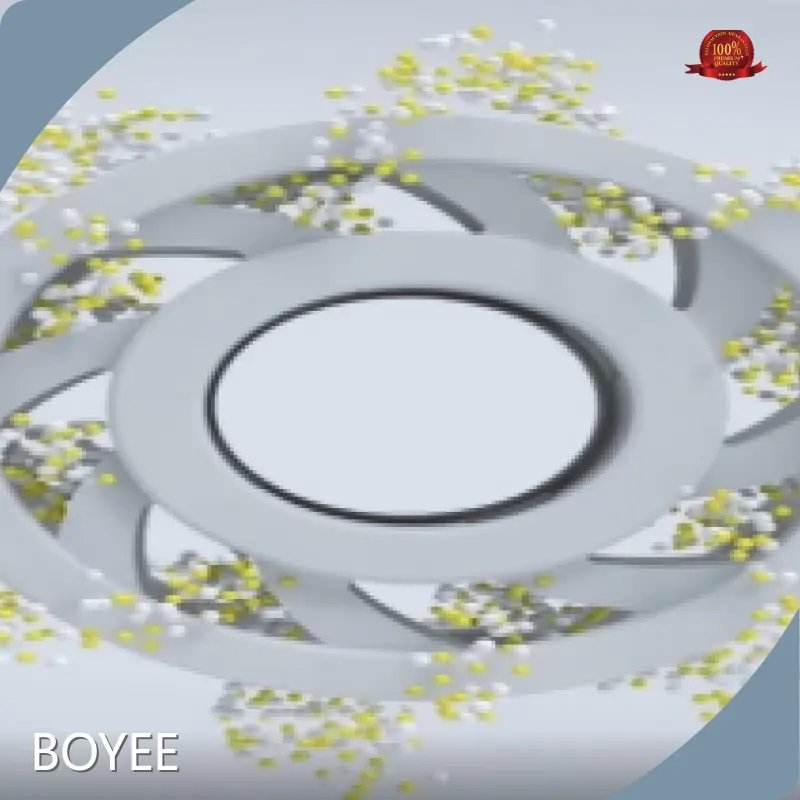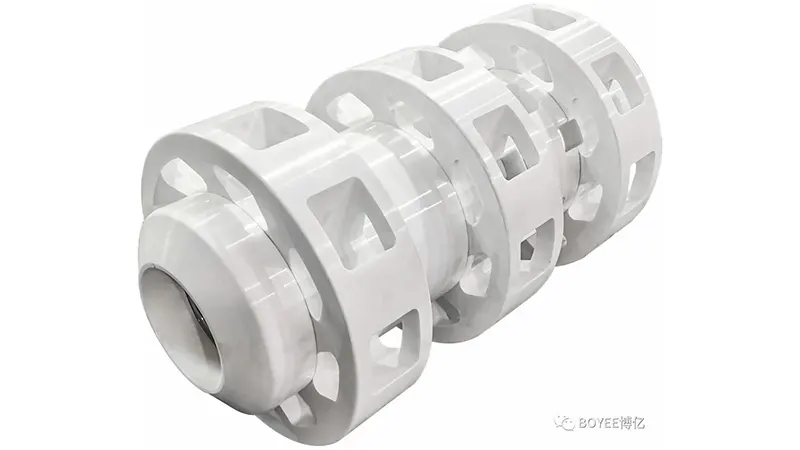BOYEE Mixing Tank LMM-90LFactory
Product details of the mixing tank
Product Description
This BOYEE mixing tank is composed of functional grade materials. The product is of reliable quality and can be used for a long time. BOYEE (SHENZHEN) INDUSTRIAL TECHNOLOGY CO., LTD has rich experience in manufacturing high quality mixing tank.
Product Display
Product Description
Specially designed for low viscosity ultra-fine grinding and dispersion, equipped with dual power, so that the material grinding and separation of independent operation, no blockage, excellent cooling performance, reduce equipment losses and improve production efficiency
Product Advantages
l Innovative centrifugal discharge
l Independent operation of material grinding and separation
l Applicable for low viscosity products
l Grinding media at a minimum of 0.05mm
l Optional turbine type and rod-pin type grinding system
l More refined grinding and dispersion effect
l Excellent cooling performance
l Various materials to meet individual needs
l Easier to be operated and cleaned
Product Parameters
| Model | Volume(L) | Power(kW) | Speed(r/min) | Media diameter(mm) | Weight(kg) | Size(mm) |
| LMM-3L | 3 | 7.5 | 0-1450 | 0.1-1 | 800 | 1400×1100×1680 |
| LMM-10L | 10 | 18.5 | 0-1460 | 0.05-1 | 1500 | 1800×1200×1550 |
| LMM-30L | 30 | 45 | 0-1000 | 0.05-1 | 2100 | 1800×1300×1800 |
| LMM-60L | 58 | 75 | 0-776 | 0.05-1 | 2800 | 3290×1478×1950 |
| LMM-90L | 98 | 75-90 | 0-776 | 0.05-1 | 3377 | 3290×1478×1950 |
| LMM-150L | 120-180 | 160 | 0-627 | 0.05-1 | 5600 | 4500×1700×2400 |
| LMM-400L | 400 | 315 | 0-927 | 0.05-1 | 8600 | 4600×1600×2400 |
Product Features
Our LMM series sand mill helps dispel frets over clogging the separation net during continuous running of the operation.
The LMM series innovatively applies a filter-free separation system design to separate materials and grinding materials in a dynamic centrifugal manner. It can greatly improve stability and uniformity of discharge, and your worry over net clogging can be dispelled.
Product Application
Faqs
The bead mill is a type of grinding equipment that works by using small beads or grinding media to reduce the particle size of a material. Here is a general overview of how a bead mill works:
-The material to be ground is placed in a container or vessel, called the grinding chamber, along with the grinding media. The grinding media can be made of various materials, such as glass, ceramic, or steel, and come in different sizes and shapes.
-The grinding chamber is then closed and sealed to prevent the material from escaping.
-The motor of the bead mill rotates the agitator shaft, which causes the grinding media to move and collide with each other and the material in the grinding chamber. This movement creates shear forces and impact forces that break down the material into smaller particles.
-As the material is ground and dispersed, it flows out of the grinding chamber and into a collection vessel, such as a tank or container.
-The particle size and dispersion of the material can be controlled by adjusting various parameters, such as the speed of the agitator shaft, the size and shape of the grinding media, and the residence time of the material in the grinding chamber.
Overall, the bead mill provides a highly efficient and effective method for grinding and dispersing a wide range of materials, including pigments, dyes, pharmaceuticals, and nanomaterials.
The grinding chamber of a bead mill typically has a cylindrical or conical shape and is filled with grinding media that is about 1-2 mm in diameter. The grinding media is usually made of glass, ceramic, or metal and can come in different shapes, such as spherical, cylindrical, or irregular. The grinding media is chosen based on the properties of the material to be ground and the desired particle size.
The material to be ground is introduced into the grinding chamber, along with a liquid, such as water or a solvent. The liquid serves as a carrier for the material and helps to distribute it evenly throughout the grinding chamber. The amount of liquid used depends on the viscosity of the material and the desired particle size.
The agitator shaft of the bead mill is typically equipped with discs or pegs that rotate at high speed, causing the grinding media to move and collide with each other and the material in the grinding chamber. The collisions create shear forces and impact forces that break down the material into smaller particles.
The size of the particles is determined by the residence time of the material in the grinding chamber, the speed of the agitator shaft, and the size and shape of the grinding media. The longer the material stays in the grinding chamber and the faster the agitator shaft rotates, the smaller the particle size.
As the material is ground and dispersed, it flows out of the grinding chamber and into a collection vessel, such as a tank or container. The liquid can be recycled back into the grinding chamber to ensure that the material is evenly distributed and to maintain a consistent particle size.
In summary, a bead mill works by using grinding media to create shear forces and impact forces that break down the material into smaller particles. The particle size can be controlled by adjusting various parameters, such as the speed of the agitator shaft, the size and shape of the grinding media, and the amount of liquid used.
Company Feature
• Our company enjoys a superior geographical position, convenient transportation and developed communication. All that creates good external environment for our own development.
• Our company has gathered a large number of talents with rich experience in management, technology, production and operation. We also have established a number of departments to lay a solid team foundation for production, research and sales.
• BOYEE's sales network covers major provinces, cities and autonomous regions in the country. In addition, Bead mill are favored by overseas customers and are sold to Southeast Asia, Africa, Australia, and other countries and regions.
Enjoy BOYEE's discount for bulk purchase of Bead mill. Please contact us for quotation.
Saturday: 9:00AM~4:00 PM












